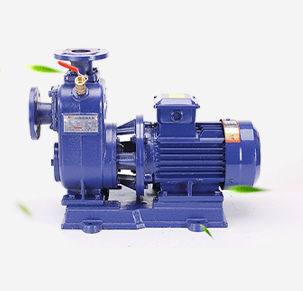Nepali
- Afrikaans
- Albanian
- Amharic
- Arabic
- Armenian
- Azerbaijani
- Basque
- Belarusian
- Bengali
- Bosnian
- Bulgarian
- Catalan
- Cebuano
- Corsican
- Croatian
- Czech
- Danish
- Dutch
- English
- Esperanto
- Estonian
- Finnish
- French
- Frisian
- Galician
- Georgian
- German
- Greek
- Gujarati
- Haitian Creole
- hausa
- hawaiian
- Hebrew
- Hindi
- Miao
- Hungarian
- Icelandic
- igbo
- Indonesian
- irish
- Italian
- Japanese
- Javanese
- Kannada
- kazakh
- Khmer
- Rwandese
- Korean
- Kurdish
- Kyrgyz
- Lao
- Latin
- Latvian
- Lithuanian
- Luxembourgish
- Macedonian
- Malgashi
- Malay
- Malayalam
- Maltese
- Maori
- Marathi
- Mongolian
- Myanmar
- Nepali
- Norwegian
- Norwegian
- Occitan
- Pashto
- Persian
- Polish
- Portuguese
- Punjabi
- Romanian
- Russian
- Samoan
- Scottish Gaelic
- Serbian
- Sesotho
- Shona
- Sindhi
- Sinhala
- Slovak
- Slovenian
- Somali
- Spanish
- Sundanese
- Swahili
- Swedish
- Tagalog
- Tajik
- Tamil
- Tatar
- Telugu
- Thai
- Turkish
- Turkmen
- Ukrainian
- Urdu
- Uighur
- Uzbek
- Vietnamese
- Welsh
- Bantu
- Yiddish
- Yoruba
- Zulu
Telephone: +86 13120555503
Email: frank@cypump.com
डिस . 06, 2024 14:20 Back to list
Pumps Designed for Efficient Water Removal Solutions and Techniques
The Importance of Pumps to Remove Water Ensuring Safety and Efficiency
Water, while essential for life, can also pose significant challenges when it accumulates in undesired areas. Natural disasters such as floods, heavy rainfall, or burst pipes can lead to water pooling in homes, commercial buildings, and public spaces, creating potential hazards. This is where water pumps become a crucial solution, equipped to remove excess water quickly and efficiently, thus safeguarding properties and ensuring that normal activities can resume as swiftly as possible.
Understanding Water Pumps
A water pump is a mechanical device designed to move water from one place to another. These pumps operate through various mechanisms, including centrifugal force, positive displacement, and submersible action. Depending on the specific needs of a situation, different types of pumps can be employed. Centrifugal pumps are commonly used for larger applications where high volumes of water need to be moved, while submersible pumps are effective for pumping water from below the surface, making them ideal for dewatering basements and construction sites.
The Role of Pumps in Flood Mitigation
In the event of flooding, time is crucial. Excess water can lead to structural damage, mold growth, and hazardous conditions if not removed promptly. Water pumps play a vital role in flood mitigation by efficiently removing standing water, thereby protecting buildings and infrastructure. In urban areas, municipalities often deploy high-capacity pumps to manage stormwater and ensure that drainage systems function properly, reducing the risk of localized flooding.
The Benefits of Using Water Pumps
1. Efficiency Water pumps are designed to remove large volumes of water much faster than manual labor or traditional methods. This efficiency helps minimize potential damage and disruption in residential and commercial areas.
pumps to remove water

2. Prevention of Mold and Mildew Standing water creates a perfect environment for mold and mildew to thrive, leading to health concerns and costly remediation. By using pumps to remove water promptly, property owners can significantly reduce the risk of mold growth.
3. Safety Water accumulation can create slippery surfaces and increase the risk of accidents. By utilizing pumps to clear excess water, the safety of residents and workers is greatly enhanced.
4. Versatility Water pumps come in a variety of sizes and capacities, making them suitable for a wide range of applications. Whether it’s a small sump pump in a basement or a large pump used in flood response efforts, there’s a pump designed to meet the specific needs of the situation.
5. Cost-Effectiveness While the initial investment in a good-quality pump may seem substantial, the long-term savings associated with damage prevention, reduced repair costs, and improved property value can be significant.
Choosing the Right Pump
When selecting a water pump, several factors should be considered. The volume of water to be removed, the specific location, and the nature of the water (clean or contaminated) are crucial elements in determining the right pump. Additionally, power sources (electric or gasoline) and portability are important considerations depending on the application.
Conclusion
In conclusion, pumps designed to remove water are indispensable tools for managing water accumulation effectively. From flood mitigation to residential dewatering, these machines provide a proactive solution to prevent damage and ensure safety. Their efficiency, versatility, and cost-effectiveness make them a wise investment for homeowners, businesses, and municipalities alike. As climate changes and extreme weather events become more common, the importance of water pumps will only continue to grow, underscoring the need for preparedness and swift response to water-related challenges.
-
ISG Series Pipeline Pump - Chi Yuan Pumps | Energy Efficiency&Compact Design
NewsAug.03,2025
-
ISG Series Vertical Pipeline Pump - Chi Yuan Pumps Co., LTD.|High Efficiency, Low Noise, Durable
NewsAug.02,2025
-
ISG Series Vertical Pipeline Pump - Chi Yuan Pumps | High Efficiency, Low Noise
NewsAug.02,2025
-
ISG Series Vertical Pipeline Pump- Chi Yuan Pumps Co., LTD.|High Efficiency&Compact Design
NewsAug.02,2025
-
Heavy-Duty Mining Sludge Pumps - Wear-Resistant Slurry Handling
NewsAug.02,2025
-
Horizontal Split Case Pump with GPT-4 Turbo | High Efficiency
NewsAug.01,2025










